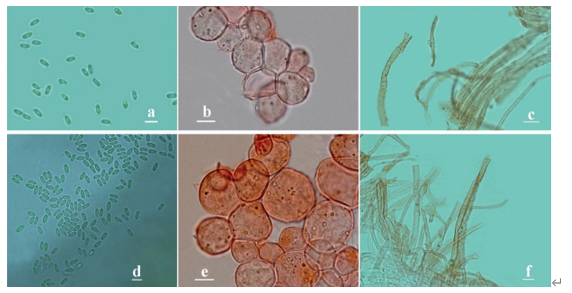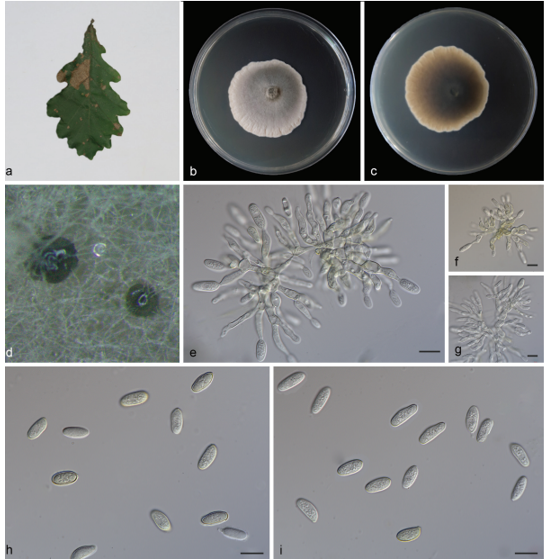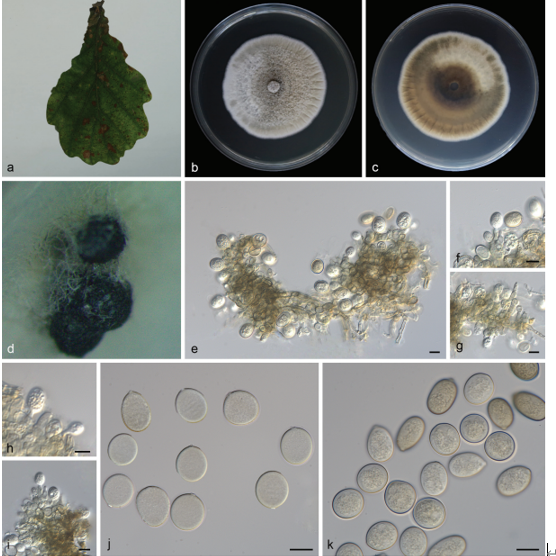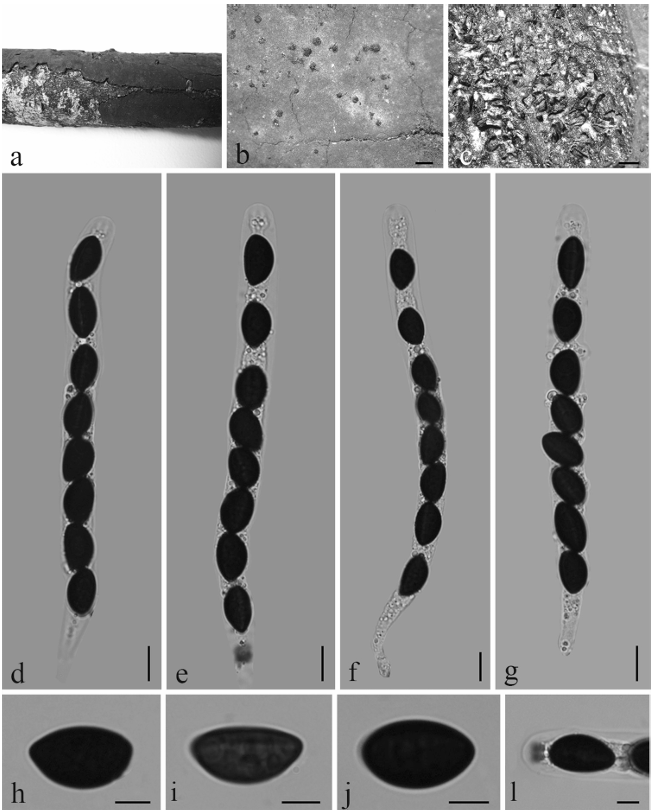Clavariadelphus gansuensis J. Zhao & L.P. Tang, sp. nov 2020
MycoBank No: 830272
Holotype China. Gansu Province: Lintan Prefecture, Yeliguan National Forest Park, coniferous woods (Abies spp.) or mixed with Betula spp. and Rosaceae plants, alt. 3000 m, 10 August 2012, X.T. Zhu 638 (HKAS 76487, Holotype); Wudu Prefecture, September 1992, M.L. Tian M6465 (HMAS 63052).
Morphological description
Basidiomes up to 9 cm high, enlarged upwards to 1.6 cm diam., simple, clavate; hymenium longitudinally rugose, pruinose, light yellow to greyish-orange at maturity; apex initially obtuse or broadly rounded, flattening laterally, then truncate, slightly rugose, light orange or melon-orange (5A5–7) to orange (6A6–7) in age; base terete, smooth, pruinose, dirty white or pallid where covered, otherwise pruinose, pale orange or light orange (5A3–4); mycelial hyphae white; flesh initially solid, then soft and spongy upwards as the apex enlarges, white to pallid. Odour and taste not recorded.
Hymenium limited to the side of basidiomata, composed of basidia and leptocystidia; the apex of basidiomata composed of sterile elements 15–25 × 5–7 μm, clavate, thin-walled, smooth, clamped. Basidia 75–90 × 8–10 μm, clavate, hyaline, thin-walled to thick-walled, 4-spored, sterigmata 7–10 μm in length. Basidiospores [20/1/1] 8.3– 10.1 (–10.3) × 5.3–6.3 (–6.4) μm, Q = (1.34–) 1.47 –1.78 (–1.83), Qm = 1.60 ± 0.09, ellipsoid to broadly ellipsoid, ovate or amygdaliform, with a small apiculus, inamyloid, thin-walled, hyaline in KOH. Leptocystidia 50–65 × 3–5 μm, scattered amongst and scarcely projecting beyond the basidia, cylindrical to narrowly clavate, thin-walled, smooth, hyaline, non-pigmented, clamped, inflated apically at maturity, at times with apical or sub-apical branches. Mycelial hyphae 2–3 μm diam., interwoven or aggregated into rhizomorphic strands, branched, clamped; the hyphal walls echinulate with light microscopy, covered with massive nipple-shaped protuberances, as well as encrusted with prism-like crystals up 5 μm long that are insoluble in KOH.
Habitat: on the ground in coniferous woods or mixed with broad-leaved trees
Distribution: NW China, Gansu Province. Solitary on the ground in coniferous woods (Abies spp.) or mixed with broad-leaved trees (Betula spp. and Rosaceae) at elevations of approximately 3000 m.
GenBank Accession:
Notes: Clavariadelphus gansuensis, currently known only from NW China, is distinct by its slender, clavate, orange basidiomes with truncate apex, ellipsoid basidiospores (8.3–10.1 × 5.3–6.3 μm), pink staining reaction to KOH, hyphae of the basal mycelium with nipple-shaped protuberances and prism-like crystals and solitary growth habit in coniferous or mixed forests.
Reference: Hong-Yan Huang1,*, Jie Zhao1,*, Ping Zhang2 , et al.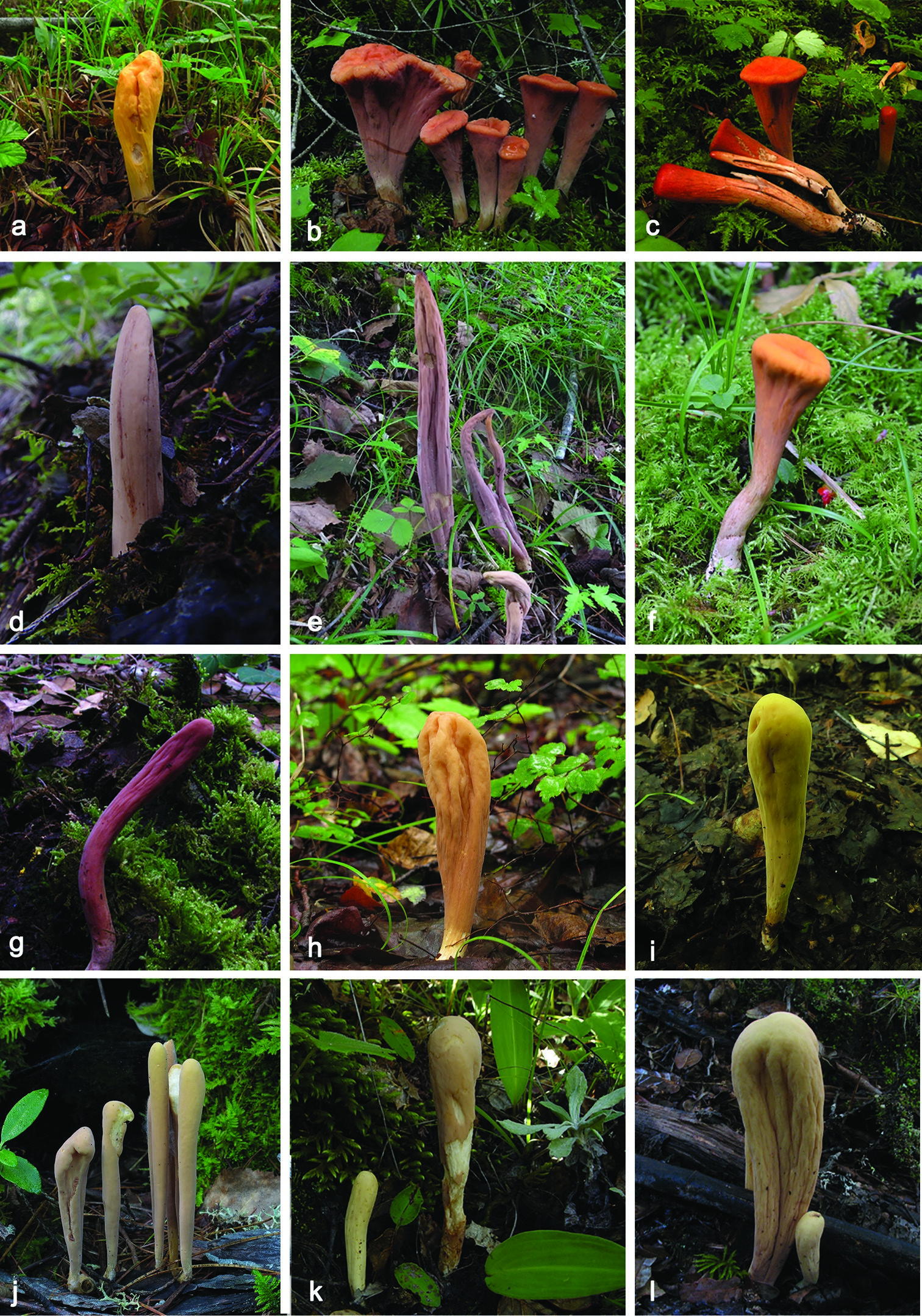
Figure 2. Clavariadelphus species in China. f C. gansuensis (HKAS 76487, holotyp


